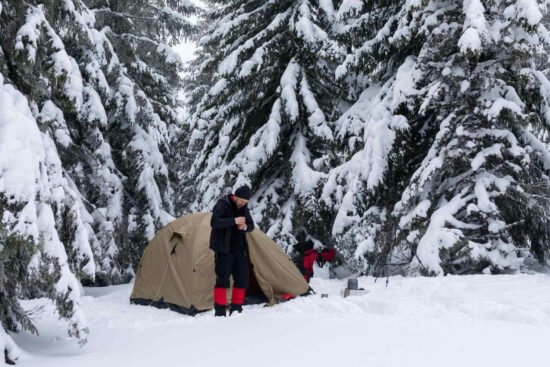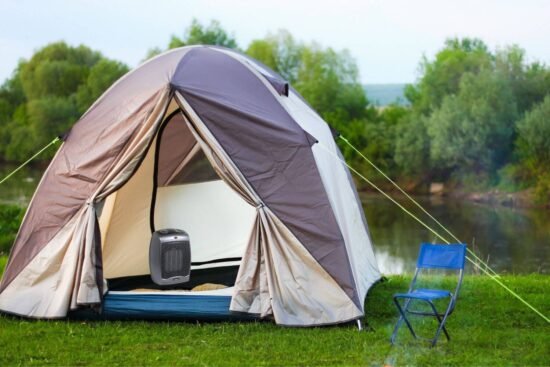The Best Tents for Snow Camping: Reviews & Tips for an Unforgettable Winter Adventure Winter camping provides unparalleled beauty and adventure — sleeping under snow-covered trees and waking to frost-rimed vistas.
Your tent is not just your protection from the elements when snow camping, it is your sanctuary. And finding a trusty one is critical for your safety, comfort, and survival in capricious winter conditions. This in-depth guide covers personality snow camping tents, what to look for, the best options to go with, and tips for staying warm on your adventures.
Why Picking the Best Tents for Snow Camping is Crucial for Your Winter Adventure
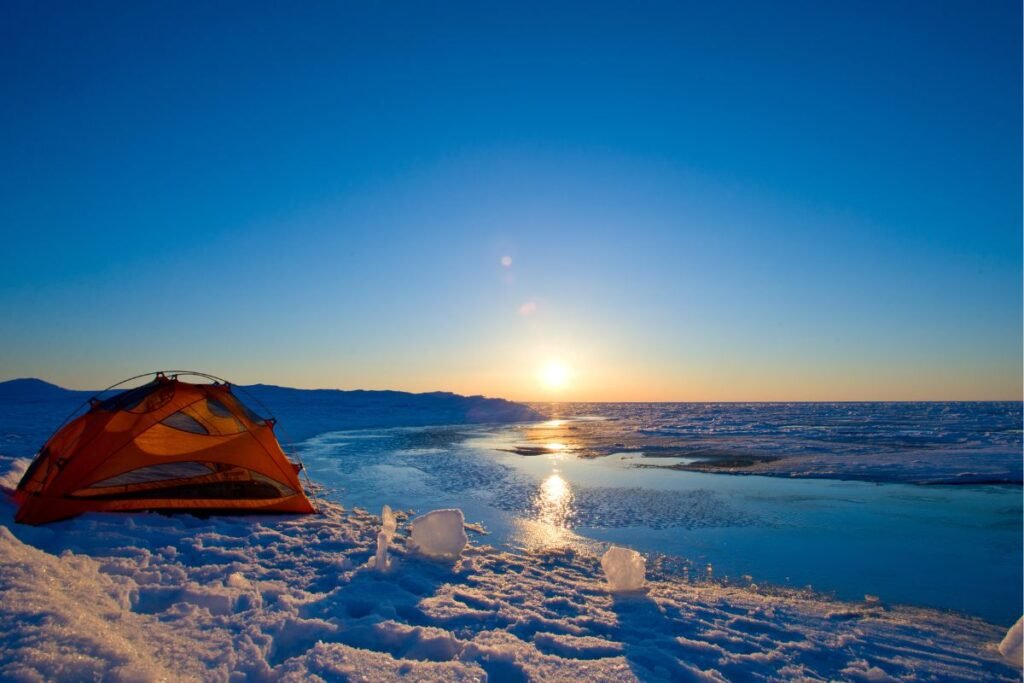
Winter camping poses special challenges that require specialized gear. Here’s why deciding the right tent is important:
- Cold Weather: You could be shivering all night in a poorly insulated tent.
- Strong Winds: In order to withstand strong winter winds, your tent should be made of durable, wind-resistant material that won’t collapse or tear.
- Snow Build-Up: If your tent isn’t made to bear weight, a thick wall of snow can crush it.
With the right tent, the challenges you might face in camping in winter wonderlands can be dealt with while you enjoy the thrill. This is a huge issue, even with the most technically advanced jackets that have powerful transpiration systems.
With the right tent, the challenges you might face in camping in winter wonderlands can be dealt with while you enjoy the thrill.
Key Factors to Consider When Choosing a Snow Camping Tent
1. Weather Resistance
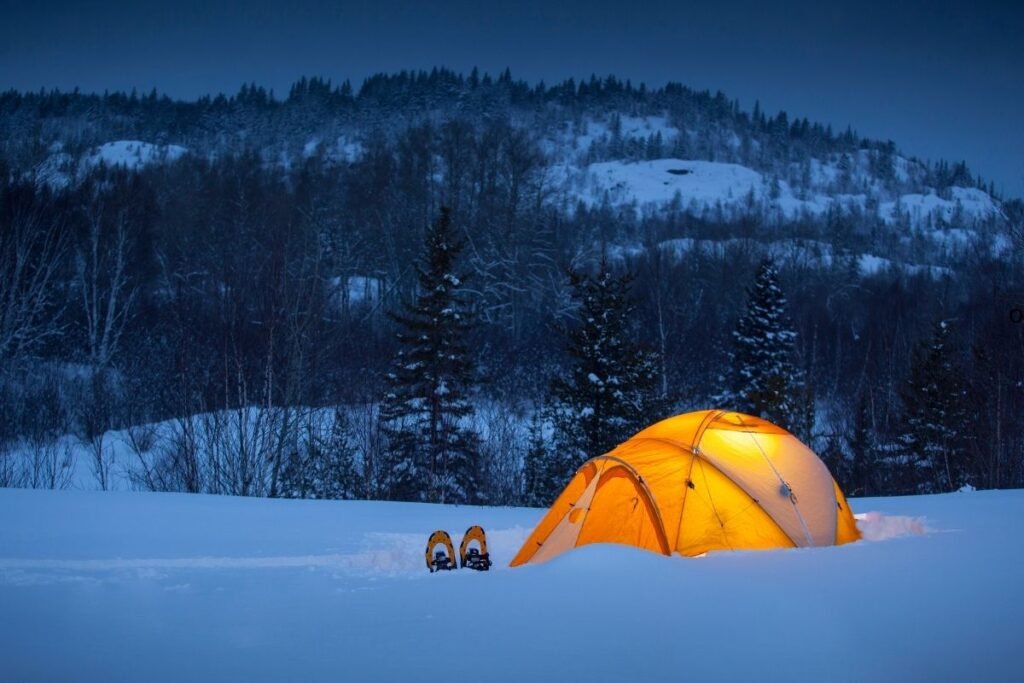
For snow camping, look for tents made from durable, waterproof materials with strong windproof capabilities. Opt for steep walls and reinforced pole structures that can handle heavy snow without collapsing.
2. Insulation & Ventilation
A good snow camping tent strikes a balance between insulation and airflow.Proper ventilation reduces condensation buildup that can freeze inside the tent. Double-wall designs are often beneficial because they separate the frost-prone outer layer from the warm inner space.
3. Weight & Portability
Heavy-duty tents are necessary for extreme conditions but can be difficult to transport. Choose a model that balances durability with packability, especially if you’re hauling it on multi-day treks.
4. Setup & Stability
The ease of pitching your tent in snow is a crucial factor. Look for tents with intuitive setups and sturdy pole designs to stay stable during windstorms.
5. Interior Space & Design
Comfort is essential. A tent with ample interior living space, gear pockets, and vestibules for storing boots and backpacks can make the experience much more enjoyable.
Types of Tents for Snow Camping
Not all winter camping tents are created equal. Understanding the different types will help you pick the one that fits your specific needs:
1. Four-Season Tents
- Designed for extreme conditions
- Built with durable materials and steep walls
- Capable of withstanding wind, snow, and sub-zero temperatures
2. Geodesic & Dome Tents
- Strongest choice for withstanding high winds and snow
- Offers excellent stability due to their multi-pole structure
3. Tunnel Tents
- Lightweight and spacious
- Great for extended camping trips and milder winter conditions
4. Single-Wall vs. Double-Wall Tents
- Single-wall tents are lighter and better for alpine trips
- Double-wall tents excel at reducing condensation and improving warmth
Best Snow Camping Tents – Reviews & Recommendations
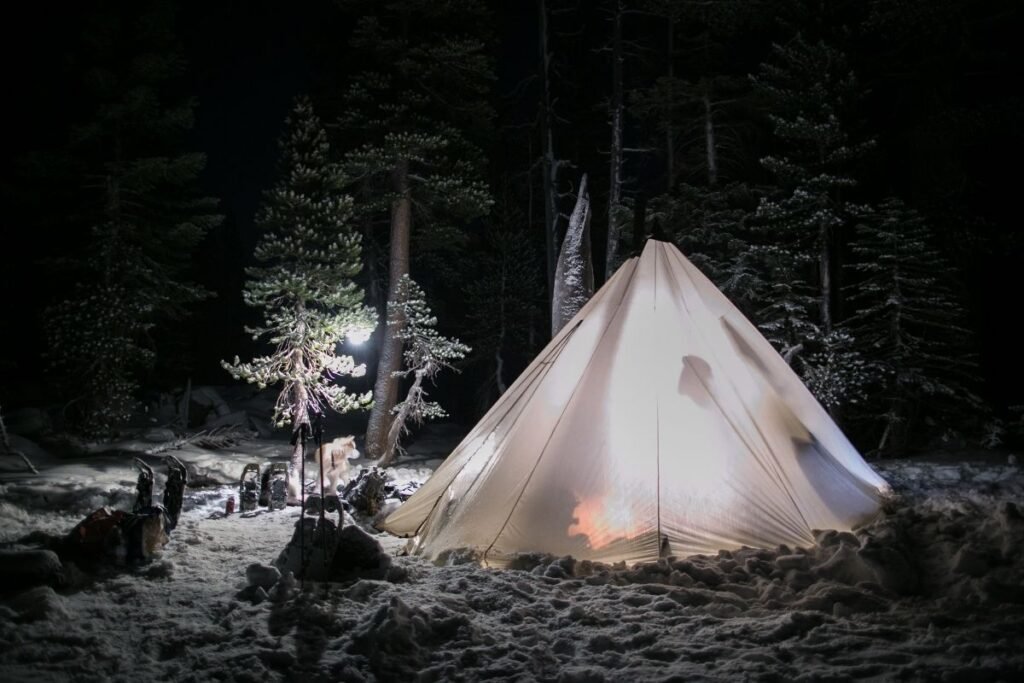
Best High-End Tent
MSR Remote 2
- Exceptional durability with heavy-duty poles
- Roomy for two people, built for alpine conditions
Best Budget-Friendly Tent
ALPS Mountaineering Tasmanian 2
- Affordable yet reliable for light snow
- 4-season rated with solid weatherproofing
Best Lightweight Tent
Black Diamond Eldorado
- Compact and easy to carry
- Perfect for solo or minimal-gear campers
Best Group Tent
The North Face VE 25
- Spacious and sturdy, fits up to three campers
- Great for group snow adventures
Best Mountaineering Tent
Mountain Hardwear Trango 2
- Ideal for high-altitude expeditions
- Handles extreme wind and snow conditions with ease
How to Set Up a Tent in the Snow

1. Choosing the Right Campsite
- Pick flat ground with natural wind protection (e.g., behind trees or rocks).
- Avoid avalanche-prone areas.
2. Preparing the Ground
- Stamp down the snow to create an even surface.
- Allow the snow base to firm up before pitching your tent.
3. Anchoring the Tent
- Use snow stakes or deadman anchors to secure the tent.
- Regular tent stakes aren’t effective in powdery snow.
4. Digging a Cold Trench
- Create a trench in the vestibule area to trap cold air below your tent floor, improving warmth.
Tips for Staying Warm Inside Your Tent
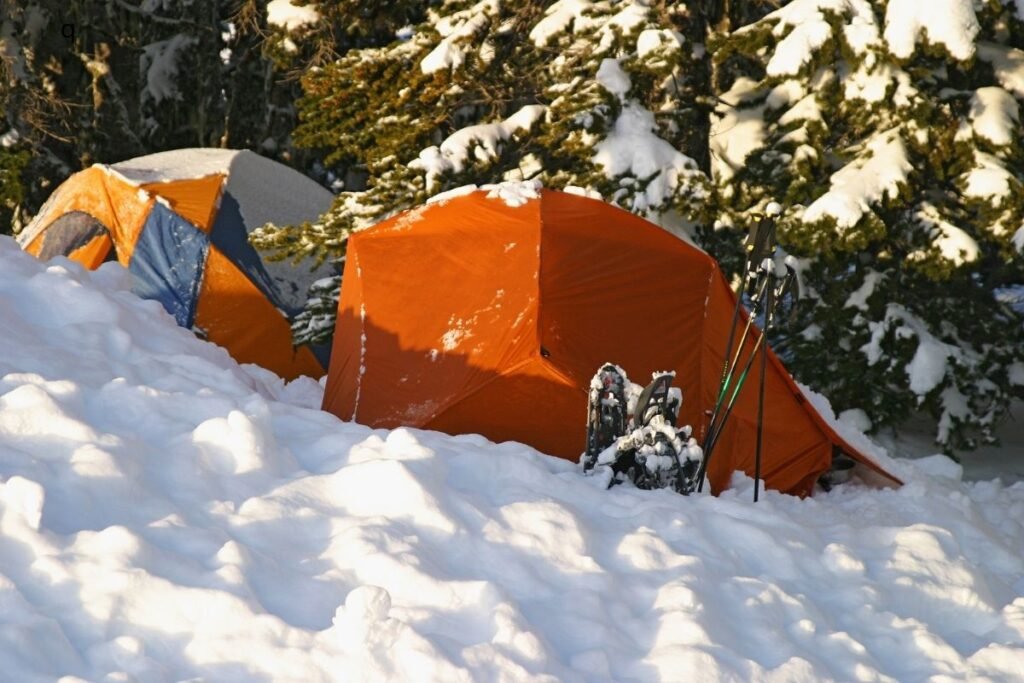
1. Invest in Quality Sleep Gear
- Use a winter-rated sleeping bag and an insulated sleeping pad for maximum heat retention.
2. Layer Wisely
- Dress in thermal layers and moisture-wicking fabrics to stay warm and dry.
3. Manage Condensation
- Ventilate your tent to reduce moisture buildup.
- Avoid breathing directly into your sleeping bag.
4. Use Safe Heating Methods
- Consider using an insulated water bottle filled with hot water as a heat pack.
- Never use open-flame heaters inside the tent for safety reasons.
Tent Maintenance & Storage After Snow Camping
- Clean & Dry: Shake off snow and ice, then fully dry your tent before storing it.
- Repair Damage: Inspect for rips or broken pole segments and fix them promptly.
- Store Properly: Store the tent in a dry, cool place to prevent mildew.
Gear Up for Your Next Snow Camping Adventure
Snow camping doesn’t just connect you to nature—it challenges you to thrive in its most beautiful, demanding forms. Choosing the right tent ensures that you stay safe, warm, and comfortable on your next winter trip.
Get a tent that suits your needs, learn how to set it up correctly, and discover the wonders of camping in the snow. If you’re still not sure what the right tent is, consider reviews, check out your local outdoor store, or ask fellow adventurers for suggestions. Here’s to maximizing your best tents for snow camping adventures!
